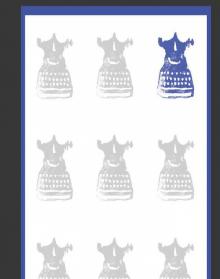- Home
- Alec Waugh
The Sugar Islands Page 16
The Sugar Islands Read online
Page 16
Judged by contemporary standards, the slave trade cannot be regarded as anything but one of the most criminal enterprises that Europe ever undertook. It must be remembered, however, that no one at the time felt that it was wrong. Africans were apparently not considered altogether human, and in 1517 Las Casas, the Bishop of Chiapa, who was greatly shocked at the treatment the Indians were receiving in Hispaniola, proposed as a solution of the problem that each Spanish resident should be allowed to import a dozen negro slaves. Later he was to regret this suggestion. But the fact that such a proposal was made by a good and holy man is an indication of the ideas prevalent at the time. African negroes were looked upon as animal machinery; when there was a shortage of labour it was only good business to transport supplies of it.
The average man today is appalled by such brutally elementary logic. But it is well for us to remember that we cannot tell how posterity is going to judge our present actions. To very many people, at this moment of writing, the dropping of the atomic bomb on Hiroshima is ethically justified because it shortened the war and saved the million or so American and British lives that would have been lost in the invasion of the Japanese mainland. It is possible that different opinions will be held in two hundred years’ time. And it is very necessary in considering the slave trade, of which present conditions in the West Indies are the direct consequence, to keep in mind the scope of the eighteenth-century conscience.
It is also necessary to remember that practically every account we have of the actual working of the slave trade is based either on the propaganda organized by the abolitionists or the defence put forward by the planters. The abolitionists argued their strong case well. Diagrams were produced showing how negroes were packed close in holds, three feet high, without light or air or sanitation, their ankles manacled by chains that, as the ship rolled, cut into their flesh. Laid on their right sides to make easier the action of the heart, they were arranged in the fashion of spoons, the bent knees of one fitting into the hamstrings of the next. These gruesome diagrams were accompanied by telling descriptions of how the negroes were nourished on rotten rice and tainted water; of how, though they were taken on deck each morning and soused with water while the holds were scrubbed, the stench grew so overpowering that ‘a slaver’ could be smelt a mile away. Pamphlet after pamphlet has described the horrors of the ‘middle passage’, maintaining that fifteen per cent, of the cargo died on the journey over.
But when we read these pamphlets today and when we read the accounts of ‘the middle passage’ that have been based upon these pamphlets, we should remember not only that these pamphlets were written with a propaganda purpose, but that the conditions in which the sailors of the Royal Navy then lived would today fill with disgust the sorriest slum brat. We should also remember—and this is a far more important point—that it was in the commercial interest of the captain and of the company which employed the captain to see that the cargo was delivered in sound condition. Real money had been paid for it at the factories. Unless real money were received for it at Cap François and Port Royal, the voyage would show a loss. The captain who did not earn a good profit for his owners would not be commissioned twice. It was in the captain’s interest to keep his cargo healthy. It might, of course, be more profitable to ship two hundred slaves under conditions that killed off fifty than to deliver one hundred slaves in good condition, provided that the price on delivery was sufficiently higher than the factory price to justify a writing-off of twenty-five per cent, as damaged stock. But the condition of the cargo was always of primary concern.
‘The horrors of the middle passage’ constitute far less of a crime against humanity than all that was involved by the factories on the Guinea Coast. There they were, those forty forts whose job it was to provide cargo for the slaver. Their presence on the edge of the bush was a constant incitement to crime, an encouragement and intensification of all that was most barbarous in the African. In their greed for Western commodities, the chiefs not only raided hostile tribes but even their own villagers. The companies that owned the forts did everything in their power to foment tribal wars. The factories along the Guinea Coast were far and away the worst feature of the slave trade.
We may assume that when abolition came, many slaves of the first generation considered they had been better off when they were the direct responsibility of their masters.
Indeed, it is doubtful whether the poorer types of West Indian labourers are very much better off today than they were a hundred and fifty years ago. Harold Stannard wrote in The Times in 1938: ‘For most inhabitants of the West Indies life means work for a white boss at the subsistence level and has never meant anything else since the first Africans were brought over some four hundred years ago.’ In an earlier article he had written of the agricultural worker of Jamaica: ‘The first time I saw one of their hovels I could hardly believe that it was intended for human occupation. Strands of dried bamboo are woven round a framework of stakes and “the room” thus formed is covered with palm thatch. There is no furniture except sacking on the earth and some sort of table to hold the oil stove. . . . Urban conditions are,’ he continued, ‘if anything, worse. In a region of Kingston now marked down for slum clearance are shacks put together anyhow out of the sides of packing cases and sheets of corrugated iron.’
In the same year a commission appointed to make an economic survey of Grenada wrote of the conditions there: ‘The housing of the agricultural labourer is disgraceful. It is impossible to use any other word to describe it. Houses little larger than small bicycle sheds are made of beaten-out Kerosene tins or old packing-cases. Others are made of pitch-pine specially purchased, but since there is seldom money to buy paint or some other preservative for the wood, it soon rots. Perhaps a better type of house is made of wattle and daub. They are said to be damp, but if they have board floors they are probably superior to the ordinary wooden house. ... In this rickety structure miscalled a house the labourer and his family have to live. Sometimes the house is divided into rooms by a partition and old newspapers are eagerly sought after to stick on the walls. Very often there is only one room and in this room the labourer, his wife, and children, are crowded pell-mell. There is no privacy; baths and proper sanitation are absent. Usually there is only one bed (or what passes as such) and the children sleep huddled together on the floor. So far as possible every crack in the floor is stopped at night to prevent the ingress of mosquitoes, draughts, and “evil spirits”.’
If one considers how the housing and general living conditions of the European labourer have risen during the last century and a half, it is very clear that there has been no proportionate rise in the standards of the West Indian labourer. I would recommend anyone who is interested in the subject to read some of the abolitionist tracts and speeches, to read ‘Monk’ Lewis’s Journal of a West Indian Proprietor and Bryan Edwards’ History of the British West Indies, recognizing that both Lewis and Edwards were apologists; then to examine the conditions under which the poorer types of West Indian live today, assessing from that examination the progress that has been made since emancipation. He should then be able to form an opinion as to the extent to which the old plantation system was, in terms of the slaves themselves, practical and paternal and to what extent it was tyrannical, brutal, and corrupt.
I have dealt at this length with the plantation system and the slave trade because that system and that trade are the foundations on which present West Indian life is built. In that system and in that trade are inherent all the problems of today. Apart from Cuba, which has a population of four and a quarter million, the present population of the West Indies is about ten million. That population is increasing fast. Jamaica’s rose by fifty per cent, between the wars. The vast majority of these inhabitants, not only of the labourers and longshoremen, but of the planters and legislators, are partly at least of African origin—are the descendants, that is to say, of slaves. Emancipation took place little over a hundred years ago: the slave trade was started over fou
r hundred years ago. It would be surprising if there remained no traces of a slave mentality, if those years of servitude had not left a legacy of suspicion and resentment; a legacy that explains the sullenness of expression that I had noticed on the faces in Martinique.
Nor is it surprising that I should have been conscious of the vast difference between the villagers of Martinique and of Tahiti. Tahiti was the home, had always been the home of a freeborn, liberty-loving people. The Tahitians have never been uprooted; they can still draw sustenance from the immemorial traditions of their race. The West Indians, on the other hand, are a mingling of a hundred tribes, a dozen races. The forty factories were scattered down the length of the Guinea Coast. The eighteenth-century planters recognized and appreciated the immense difference between one tribe and another. The men of one tribe would fetch higher prices than the men of others. The young planter was issued with manuals explaining how he could distinguish between one tribe and another and instructing him how to deal with each particular type. As far as possible, the planters tried to separate the different tribes on their estates. They were afraid that they might combine together and rebel. The planters did everything to break their links with Africa, to teach them a new language and a new faith. Old differences of tribe are now obliterated; a new language has been evolved by the natives out of their original African and the English, French, and Spanish that they have heard spoken round them. They think of themselves now as Barbadians, Haitians, or Jamaicans. But the difference of their origins is still marked upon their features. They are still a transplanted, an uprooted people.
There are other legacies as well of that original plantation system; two main legacies, I think, the first and the more important one being the inherent, hereditary laziness of the West Indian labourer. In quite considerable part, the decline of West Indian prosperity in the middle of the nineteenth century was due to the inability of the planters to induce the liberated slaves to work. For three hundred years the sugar estates had been run on a system of the labourer working under compulsion, with his old age protected and with private enterprise limited to the cultivation of his own small allotment. It is not surprising that the labourer of today, nurtured in that tradition, should be idle and improvident, and that consequently his standard of living should be so low and the profits on the estates so small.
That is the first legacy of the plantation system: that the labourer has not yet grasped the idea of working for a wage or planning for a future. The second is the colour question which today through the whole group of islands is no less acute because it is nowhere honestly and frankly faced.
Colour from the start has been a problem in the islands. Before the eighteenth century was far advanced, the rise of a mixed population had become a very serious consideration. For if the white overlord was the superior of the black man, through the mere fact of being white, then it must follow that a man who was half white was superior to the pure African. It also followed that the man who was half white was the superior of the man who was quarter white and the inferior of the one who was three-quarter white. Elaborate systems of protocol were devised and no one was more insistent than the members of the mulatto class themselves that these distinctions should be recognized and regarded. It is said today that the French do not draw a colour line, but before the Revolution the French were even more ‘nice’ than the English and the Spanish.
A people that has been brought up in such an atmosphere cannot suddenly lose their sense of colour because some advanced thinkers in Bloomsbury and Greenwich Village have decided that racial discrimination is ‘all my eye’.
I met during the First World War a man who had been born in the West Indies. A few years older than myself, he was tall and thin and handsome, and dark only in the way that certain Mediterranean types are dark, with an olive complexion and with straight black hair. He was a cricketer, and later, after the war, in London I was to meet him a number of times at Lord’s and in club matches. We became quite good friends; then, as one does, lost touch. A few years later I was to find him on the quay when my ship docked at Bridgetown. He had seen my name on the passenger list and had come down to meet me. I was not breaking my journey in Barbados. I had made no plans for myself. ‘That’s fine,’ he said. ‘In that case, I’ll consider you my guest.’
He was now, he told me, in the Colonial Service. Meeting him in England, it had not occurred to me—it had not occurred to any of us—that he had coloured blood. Meeting him now in the atmosphere of the West Indies, I recognized the fact at once. There was a sixth to an eighth part, I should imagine. His father had a plantation on the windward coast, and we drove across to it for lunch. It was a modern house with a prosperous appearance. His father was dignified, well-educated, with a somewhat patrician manner. But there was not the slightest doubt that one at least of his grandparents had been very nearly black. There was a girl to make a fourth, very young and very pretty, with a pleasantly modulated, sing-song West Indian voice. She did not talk a great deal. But she was an interested listener. She watched my friend all the time.
My friend asked me about her that night when we dined alone in town.
‘What did you think of her?’ he said.
‘Charming, naturally. And very lovely.’
‘Would you say that it was quite obvious that she had coloured blood?’
I hesitated. It is the kind of question that one does not like to have asked one in the West Indies. One is uncertain as to the kind of answer that is expected. Usually I tend to prevaricate. But she was so very obviously coloured, rather more than quarter caste, and I knew the man pretty well. ‘Well, I suppose it is,’ I said, ‘a little.’
He laughed rather ruefully. ‘I was afraid you would say that. Yes, it is obvious. And I’m in the Government service. I’m ambitious. As you know I did well at Oxford. I got a “mention” in the war. There’s no reason why I shouldn’t go quite a long way. Of course, I’m a West Indian myself. You may not have noticed, but I am. It isn’t very obvious. I don’t think anyone in England was aware of it. It wouldn’t do me any harm in my career— particularly if I were to marry someone who was a hundred per cent, white. But if I were to marry Cecile—no, it would never do. I should never get anywhere. I should be offered minor, insignificant appointments all my life. And the damnable thing is that I don’t suppose I shall ever care for anyone in the way that I do for her.’
I have not seen him since. But I have followed his career. He is in West Africa, relatively high up in the service. He is married to an Englishwoman, and is the father of two children. The second war brought him a C.B.E. He is in the middle fifties and will be retiring soon. He has a reasonable chance of being knighted. He has been successful. But I wonder if he has been happy.
This happened, or rather this choice was presented to him, twenty years ago, and the issue of colour as the issue of class is, it must be remembered, a different one today. Lines are not so strictly drawn. He was a Barbadian, too, and as such would be more conscious of this particular issue than a Jamaican or a Trinidadian. Moreover, it is possible that my friend was exaggerating the effect on his career of marriage to a girl of obviously African ancestry. But the fact that he was conscious of those dangers, that those dangers should have constituted so actual a problem for him, is symptomatic of West Indian life. Everywhere under the surface that problem lies. For over four hundred years there has been interbreeding between black and white, and brown and quarter-white. Every shade of colour is to be found. And the man with a greater degree of white considers himself the superior of the man with a lesser degree of white, and the man with the lesser degree resents it. It is a problem that affects business, local politics, and all social relations.
For the visitor it is a tricky and a tiresome situation. It is tricky because he does not know who is considered coloured and who is not. Except in Barbados and in Antigua there are few local families without some African ancestry. Yet these slightly coloured families rigidly exclude from their clubs thos
e with obviously dark skins. British governors and administrators refuse to recognize these distinctions and invite impartially to Government House dinners and tennis parties the white, the near-white, the coloured, and the coal black. The various groups meet amicably there at the cocktail bar and the bridge table. Then they scatter to their separate cliques. In every island except Grenada there are two camps and the visitor has to make his choice.
In the cool of the evening he will stroll up from his hotel to the savannah. He will pass a succession of small shacks and shops, with radios playing and bright interiors and children tumbling over one another in the gutter. He will reach an open space. A couple of tennis courts flank a long, wide bungalow. He will pause and watch the play. The young and the middle-aged are meeting on equal terms; the standard of play is high; the bungalow is brightly lighted; a man in shirtsleeves is leaning forward across a billiard table; a boy in white uniform is carrying a tray of drinks to a quiet corner of the veranda where a bridge four is in progress; a dozen or so persons of mixed sexes are at the bar; there are others, sitting out in deck chairs on the veranda, watching the play. It is all very cosy and congenial, a friendly mixing of sexes and age groups. But this is not the club towards which the visitor is on his way. The faces of the members are dark, or fairly dark.
He will go on a little farther. He will pass another succession of shacks and shops. Then once again he will reach an open space. A couple of tennis courts flank a long, wide bungalow. He will pause to watch the tennis. The standard of the play is high; the young and the middle-aged are mixing on equal terms; the bungalow is brightly lighted; a man in shirtsleeves is leaning forward across a billiard table; a boy in white uniform is carrying a tray of drinks to a quiet corner of the veranda where a bridge four is in progress; a dozen or so persons of mixed sexes are at the bar; there are others, sitting out in deck chairs on the veranda watching the play. It is all very cosy and congenial, a friendly mixing of sexes and of age groups. It is the club of which the British Administrator is the patron. Its membership consists of British officials and the families of those planters, agents, and store-owners whose skin is either white or nearly enough white to pass as white. This is the club for which the visitor is bound, and unless he is very bigoted, he can hardly fail to feel that it is ridiculous that these two social camps should exist side by side, identical but alien, in a small island whose fortunes and future depend on a pooling of effort and resources. Nor can he fail to find tiresome the inevitable corollary to this situation, the persistence with which the near-whites stress the failing and deficiencies of their darker cousins. ‘Do they really believe,’ he asks himself, ‘that they are, as they claim to be, the direct unclouded descendants of English noblemen and French aristocrats fleeing from the Terror?’ He will find it hard to believe in the complete mental honesty of those whose whole life is the perpetual maintenance of a façade.

 A Spy in the Family
A Spy in the Family Love in these Days
Love in these Days The Balliols
The Balliols Kept
Kept Fuel for the Flame
Fuel for the Flame Wheels within Wheels
Wheels within Wheels The Sugar Islands
The Sugar Islands No Truce with Time
No Truce with Time My Place in the Bazaar
My Place in the Bazaar Thirteen Such Years
Thirteen Such Years The Loom of Youth
The Loom of Youth A Year to Remember
A Year to Remember A Family of Islands
A Family of Islands Brief Encounter
Brief Encounter Guy Renton
Guy Renton So Lovers Dream
So Lovers Dream His Second War
His Second War My Brother Evelyn & Other Profiles
My Brother Evelyn & Other Profiles The Mule on the Minaret
The Mule on the Minaret Sir!' She Said
Sir!' She Said Nor Many Waters
Nor Many Waters The Fatal Gift
The Fatal Gift Where the Clocks Chime Twice
Where the Clocks Chime Twice Hot Countries
Hot Countries Unclouded Summer
Unclouded Summer Island in the Sun
Island in the Sun